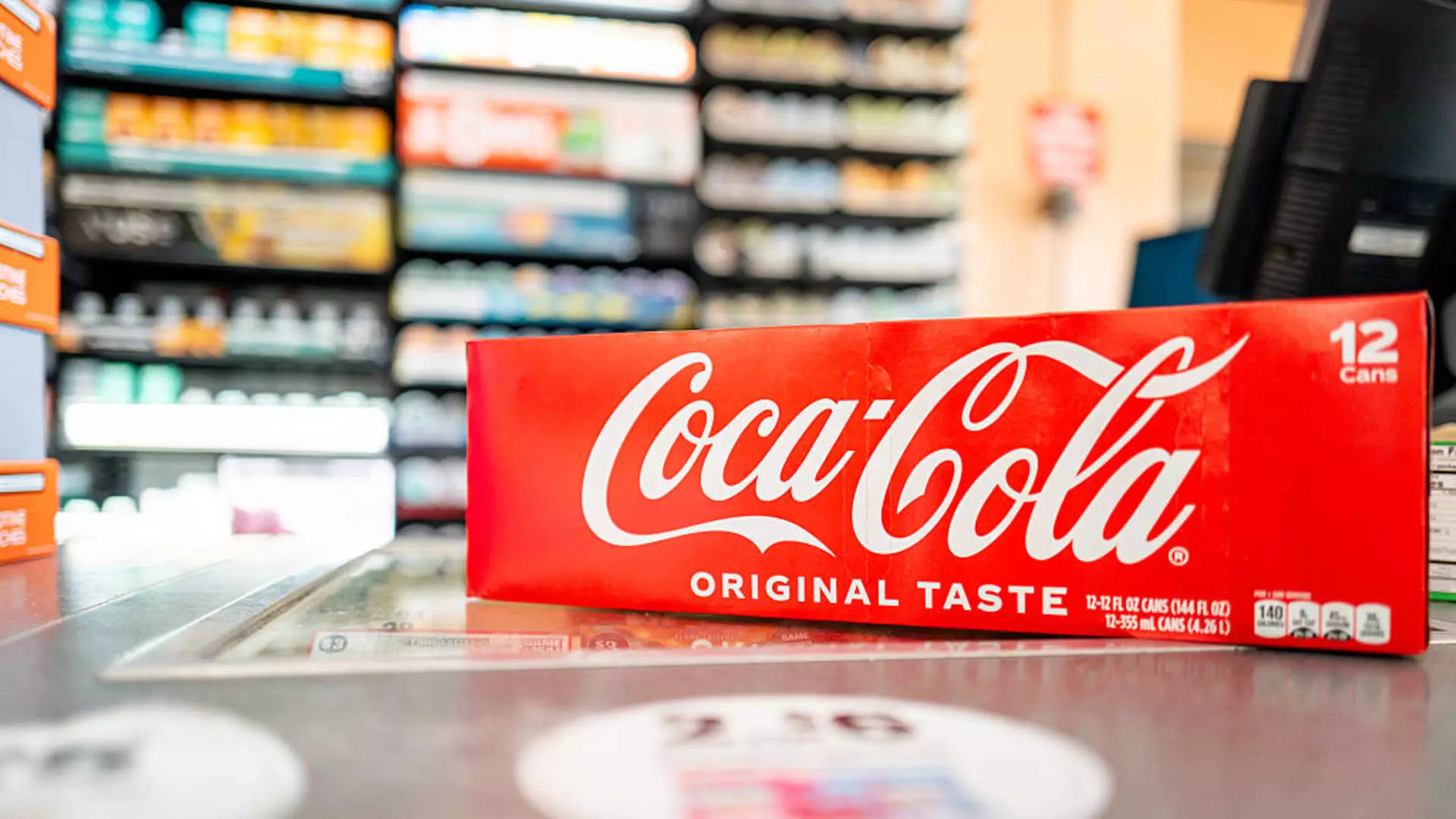Coca-Cola’s recent earnings report painted a picture of modest success that, on closer inspection, reveals a fragile and increasingly uncertain corporate landscape. The company’s ability to beat analyst expectations with modestly higher earnings per share and revenue was spun as a triumph, yet beneath that veneer lies a troubling irony: a company still grappling with declining volumes, shifting consumer preferences, and geopolitical headwinds. The seemingly positive headline—”profits exceed expectations”—masks a more nuanced reality of a brand fighting to maintain relevance and profitability in a rapidly changing global market.
While the figures—$12.62 billion in revenue and an 87-cent adjusted EPS—appear robust, these numbers are buoyed more by pricing strategies and currency effects than genuine volume growth. The reality is that Coke’s global unit case volume declined by 1%, with most regions experiencing losses. That a multinational beverage behemoth can consistently report revenue growth in the face of shrinking physical demand underscores an unsettling trend: profits are increasingly driven by price hikes and inflation rather than organic consumer demand. This is a warning sign that the company’s future health might be more brittle than the optimistic metrics suggest.
Hope in Europe, but At What Cost?
One bright spot in Coke’s otherwise gloomy landscape was its European operations, where volume growth of 3% temporarily lifted spirits. However, this success is deceptive. Europe’s economic instability, rising inflation, and social unrest threaten long-term growth prospects. Moreover, the region’s apparent resilience likely results from consumers paying more for fewer products rather than increased demand. The Eurozone’s fragile recovery raises questions about whether this growth is sustainable or merely a band-aid on deeper issues.
The company’s CEO James Quincey seemed eager to highlight signs of improvement in markets hit hard earlier in the year, like the U.S. and Europe, implying that strategic efforts are turning the tide. Still, these comments do little to conceal the broader narrative: demand in core markets is waning, and the company’s reliance on pricing power is unsustainable in a world where consumers face economic pressures that limit discretionary spending. The false sense of victory masks a reality where Coca-Cola must battle increasing consumer saturation and economic headwinds that threaten long-term stability.
The Challenge of Changing Consumer Tastes and Social Factors
Consumer behavior is shifting rapidly away from sugary sodas, and Coca-Cola’s struggle to adapt is evident. The decline in volume across most segments—except for water and coffee—raises an uncomfortable question: is the company’s product portfolio still resonant with modern tastes? The declining demand for sparkling soft drinks—down 1% globally—reflects a broader health-conscious movement that Coca-Cola has been slow to fully embrace.
Adding to these challenges are social and political tensions that translate into tangible business impacts. Rumors and misinformation, such as the false accusations regarding U.S. immigration reporting, have temporarily dampened Latin American sales. Such social unrest and media narratives reveal how fragile brand trust can be in a polarized and digitally driven environment. Coca-Cola’s slow response to these issues demonstrates a corporate culture that may lack agility, risking long-term damage to its reputation and sales in key markets.
Strategic Moves or Short-term Fixes?
The decision to launch a cane sugar version of Coke in the U.S. this fall hints at a cautiously optimistic but fundamentally reactive strategy. While product diversification aligns with consumer demand for natural and traditional ingredients, it may serve more as a Band-Aid than a cure for declining soda consumption. Meanwhile, the company’s outlook for only a 3% annual increase in earnings underscores cautious optimism—yet also hints at the limited runway for growth. A focus on price hikes, currency effects, and selective innovations masks the deeper difficulties of shrinking core demand.
Furthermore, the company’s commitment to 5-6% organic revenue growth in 2025 appears increasingly ambitious given current trends. If the company continues to rely primarily on pricing strategies rather than genuine market expansion, it risks long-term profit erosion. Coca-Cola’s apparent success might be a temporary illusion—one that could fade as inflationary pressures, health trends, and social challenges continue to reshape the beverage landscape.
The Illusion of Stability in a Tumultuous World
Coca-Cola’s recent earnings report illustrates the paradox facing many large corporations: growth metrics can be manipulated to paint a picture of stability and resilience, even as consumer demand falters and geopolitical tensions tighten their grip. While investors may be comforted by slight beats on earnings and incremental market improvements, the broader story is one of a legacy brand navigating an increasingly fragmented and skeptical consumer base.
The company’s dependence on strategic price increases and selective product innovation only temporarily masks underlying decline. If economic uncertainties persist and social factors continue to undermine consumer confidence, Coca-Cola’s current strategies may prove unsustainable. The illusion of consistent growth could ultimately crumble under the weight of long-term structural shifts that threaten its very foundation—transforming what seems to be a resilient giant into a company vulnerable to the winds of change.


Leave a Reply